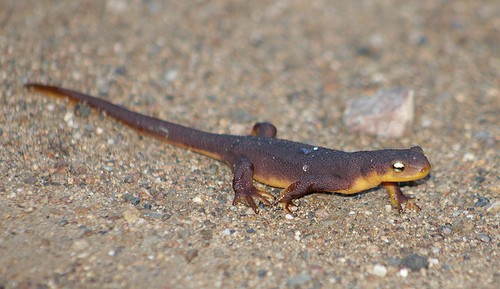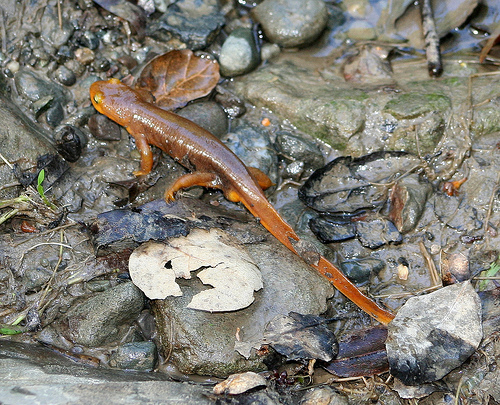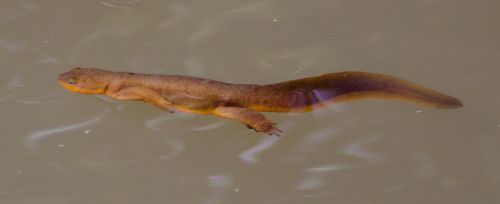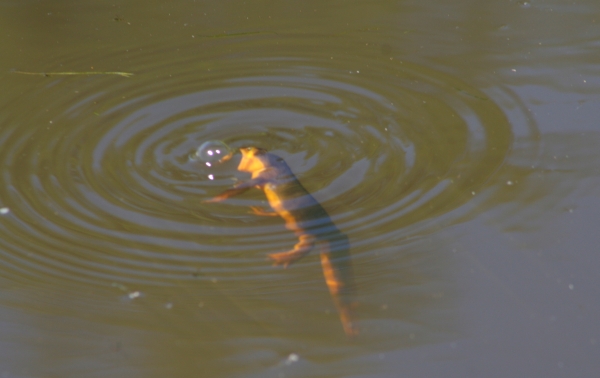
|
|
 Pleasanton Ridge, during winter rains  Las Trampas Regional Wilderness, aquatic phase, breeding male, during winter rains  Long Ridge Open Space Preserve, April  Sunol Regional Wilderness, April California Newt - Taricha torosaOverviewThe California Newt is one of five members of the newt family Salamandridae in California. This newt is endemic to California, occupying a coastal range from Humboldt County to the Mexican border and the western slope of the Sierra Nevada mountain range. Terrestrial adults are around 4.9 - 7.8 inches long, yellowish-brown to dark brown along the back and pale yellow to orange on the belly. Their poisonous skin secrets a neurotoxin called tetrodotoxin for defense against predators; thus, one should exercise great care if handling these creatures. Its primary native predator is the Common Gartersnake (Thamnophis sirtalis) which has developed a genetic resistance to tetrodotoxin. To expose its bright orange coloration, a newt will raise its head and point its tail while arching the back and turning the legs upward as a warning to predators. Status and ConservationThe California Newt is currently a California Special Concern species (DFG-CSC), but does not posses a federal conservation status. Its IUCN Red List status is of least concern. Invasive species such as Mosquitofish (Gambusia affinis) and Crayfish (Procambarus clarkia) pose a predation threat to newt populations by preying upon larvae. Newts can travel great distances to return to the ponds where they were born in order to find a mate. To allow a safe migration passage for Taricha torosa, the East Bay Regional Park District closes South Park Drive where many newts will cross in Tilden Regional Park from the beginning of November until April 1st. Where to ViewThese salamanders can be seen under damp leaf litter in moist habitats or in crevices during the daylight hours. They spend the dry months of summer and fall in underground burrows, gopher holes, or under rocks waiting for rain. They become aquatic when breeding and can be found near creeks and small ponds. The Locations page has details about all these places.
Articles and Links
Video
|